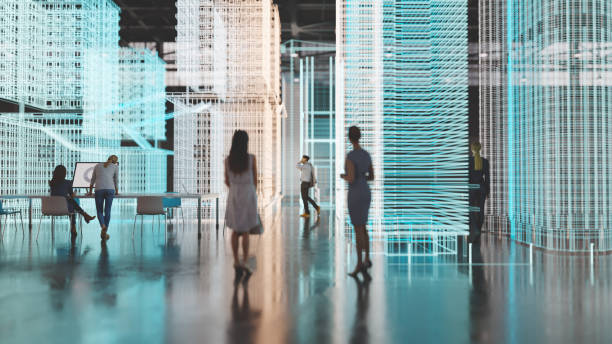Augmented Reality's Cultural Renaissance in Museums
In an era where technology and art increasingly intertwine, museums are experiencing a profound transformation. Augmented Reality (AR) is emerging as a powerful tool, revolutionizing how we interact with cultural artifacts and historical narratives. This digital renaissance is not just enhancing visitor experiences but reshaping the very concept of museum curation and engagement.

From Static Displays to Interactive Journeys
Traditional museum displays often struggle to fully convey the context and significance of their exhibits. AR addresses this limitation by providing a dynamic, interactive layer of information. Imagine pointing your smartphone at an ancient Greek vase and watching as figures spring to life, enacting scenes from mythology. This level of engagement not only educates but also captivates audiences of all ages.
Accessibility and Inclusivity Through Technology
One of the most significant impacts of AR in museums is its potential to enhance accessibility. For visitors with disabilities, AR can provide alternative ways to experience exhibits. Audio descriptions, sign language interpretations, and tactile feedback through haptic devices can all be integrated seamlessly through AR applications, making art and history more inclusive than ever before.
Preserving the Past, Embracing the Future
Conservation is a primary concern for museums, often limiting the public’s access to fragile artifacts. AR offers a solution by allowing visitors to examine detailed 3D models of objects too delicate for display. This technology not only protects valuable pieces but also enables museums to showcase a broader range of their collections, including items typically kept in storage.
The Curatorial Challenge: Balancing Technology and Tradition
While the benefits of AR in museums are clear, its implementation presents new challenges for curators. Striking the right balance between technological innovation and preserving the authentic museum experience is crucial. Curators must now consider how AR can enhance rather than distract from the physical artifacts, ensuring that the technology serves the art rather than overshadowing it.
Global Connections: AR’s Role in Cultural Exchange
AR is breaking down geographical barriers, allowing museums to collaborate on a global scale. Virtual exhibitions can now feature artifacts from multiple institutions, creating rich, cross-cultural experiences. This digital interconnectivity is fostering a new era of cultural exchange, enabling visitors to explore collections from around the world without leaving their local museum.
Educational Impact: Learning Through Interaction
The educational potential of AR in museums is immense. By transforming static exhibits into interactive learning environments, AR caters to diverse learning styles. Students can engage with historical figures, manipulate scientific models, or explore ecosystems, all within the museum space. This hands-on approach to learning is proving particularly effective in engaging younger generations.
Ethical Considerations in Digital Repatriation
As AR technology advances, it raises intriguing questions about cultural ownership and repatriation. Digital recreations of artifacts can now be displayed in their countries of origin, even while the physical objects remain elsewhere. This virtual repatriation opens new avenues for cultural reconciliation but also sparks debates about authenticity and the role of physical artifacts in cultural heritage.
The Future of Museum Experiences
Looking ahead, the integration of AR in museums is set to become even more sophisticated. Advancements in holographic technology and haptic feedback promise to create even more immersive experiences. The line between the physical and digital realms will continue to blur, offering visitors unprecedented ways to engage with art, history, and culture.
As Augmented Reality cements its place in the cultural sector, it’s clear that we’re witnessing a paradigm shift in how we experience and interact with our shared heritage. This digital renaissance in museums is not just about embracing new technology; it’s about reimagining the role of cultural institutions in the 21st century. By bridging the gap between the tangible and the digital, AR is opening up new horizons for education, preservation, and global cultural exchange, ensuring that museums remain vibrant, relevant, and accessible for generations to come.






